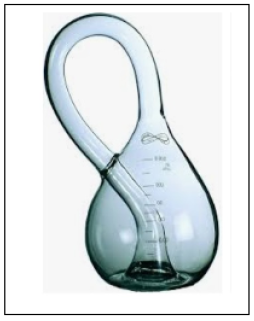- Submissions

Full Text
Academic Journal of Engineering Studies
Popularization of Mathematics - the Queen of the Sciences by Demonstrating its Daily Implementation and Visualization
Dan Ophir*
Ariel University, Computer Science Department, Israel
*Corresponding author:Dan Ophir, Ariel University, Computer Science Department, Ariel, Israel
Submission: March 22, 2022; Published: April 14, 2022
.jpg)
ISSN:2694-4421 Volume2 Issue5
Abstract
Mathematics has earned the nickname “the Queen of the Sciences”, quoted by Carl Friedrich Gauss, due to its deep involvement in the study of other sciences and its support for accelerated technological development, which we have been steamrolling in recent years. The contribution of mathematics to science is visible to researchers in the relevant fields; however, its contribution to technology is latent. The end user of a technological product is unaware of the mathematics invested in the product’s development. The penetration of technology into new areas of our lives such as biology, medicine, and agriculture, which until recently, were often foreign to technology, opened users’ eyes to it, and together, it covertly revealed mathematics. This fact has increased the need for researchers in relevant fields such as mathematics and computer science. Raising this topic highlights the importance of mathematics and computer science and hopefully will make mathematics more accessible to the student, who often suffers from a psychological barrier and fear of mathematics and related fields. We will scan various areas of mathematics and see examples of how each area contributes to finding solutions to practical problems that we encounter nowadays [1].
Keywords:Applied mathematics; Theoretical mathematics; Continuous mathematics; Discrete mathematics; Computer science; Fibonacci series; Syllepsis; The bridges of königsberg; Hungarian cube; The traveling salesman problem
Introduction
We will review a number of areas of mathematics and examples of their applications.
a. Differential-Integral Calculus: Fibonacci Series - An ascending series of numbers in
which the quotient of the two differences in the last neighbor numbers converges to a golden
ratio, which is used in architecture. Mathematically, the concept of a limit is illustrated here.
b. Logic: Syllepsis is presented here, which is defined as a mistake in drawing
conclusions that lead to a contradiction - a suitable arithmetic example is given. This is an
amusing illustration to learn logic.
c. Numbers Theory: Prime Numbers - An illustration of a spiral of Ulam showing the
location of the Prime Numbers on the x-axis [2].
d. Algebra: The concept of a Group might be illustrated with the help of the Hungarian
Cube.
e. Graph Theory: The Euler Path, Introducing the “Königsberg Bridges” Problem,
Solving Navigation Problems - the “Traveling Salesman” Problem.
f. Numerical Analysis: A visual illustration of the iterations needed to find the zero of
a function using the Tangent Method.
g. Theory of Variations: Search for an optimal function that
describes the shape of a hanging rope; its shape is formed under the
constraints of gravity. These shapes are represented in decorative
chains that are popular in architectural design.
h. Combinatorics: Concepts such as permutations and
combinations are illustrated by the Sierpiński Triangle.
i. Approximation Theory: It represents, with the help of the
Stirling formula, an approximated function of the factorial function.
j. Probability: It might be represented by the concept of
randomness in conjunction with the visualization of a casino
operation, for example [3].
k. Set Theory: A Universal Set leading to internal
contradictions – demonstrated by the “Barber Paradox” and the
concept of the countable sets may represent this topic.
l. Topology: Different surfaces and spaces - Demonstration
of the “Klein Bottle”, in which there is a transition from the bottle
envelope to its interior (Figure 1), emphasizing the importance of
the visuality.
Figure 1:Transparent KLEIN bottle illustrating its entrance, showing the path from the envelope to its interior.

References
- Ophir D (2011) DDDL: A descriptive, didactic and dynamic programming language. Israeli-Polish Mathematical Meeting, Łódź, Poland.
- Ophir D (2017) A sociable robot as a language teacher. The Israeli Association for Literacy and Language, The Open University, Raanana, Israel.
- Gardner M (1971) Mathematical games from scientific American. Freeman and Company, San Francisco, USA.
- Steinhaus H (1989) The mathematical kaleidoscope. Polish Pedagogical Edition, Warsaw, Poland.
© 2022 Dan Ophir. This is an open access article distributed under the terms of the Creative Commons Attribution License , which permits unrestricted use, distribution, and build upon your work non-commercially.
 a Creative Commons Attribution 4.0 International License. Based on a work at www.crimsonpublishers.com.
Best viewed in
a Creative Commons Attribution 4.0 International License. Based on a work at www.crimsonpublishers.com.
Best viewed in 







.jpg)






























 Editorial Board Registrations
Editorial Board Registrations Submit your Article
Submit your Article Refer a Friend
Refer a Friend Advertise With Us
Advertise With Us
.jpg)






.jpg)














.bmp)
.jpg)
.png)
.jpg)










.jpg)






.png)

.png)



.png)






